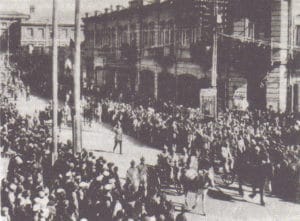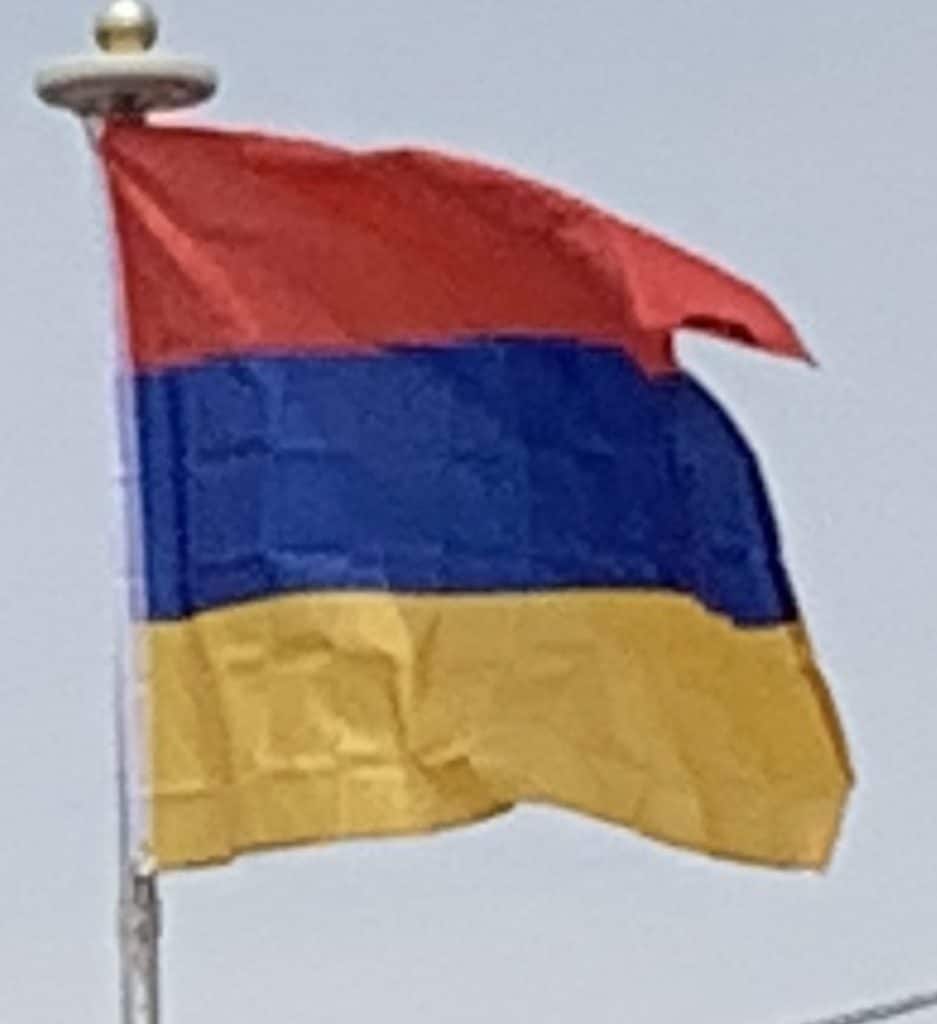In 1920, Turkish nationalist forces invaded the fledgling Armenian republic from the east. Turkish forces under the command of Kazım Karabekir captured Armenian territories that Russia had annexed in the aftermath of the 1877–1878 Russo-Turkish War and occupied the old city of Alexandropol (present-day Gyumri). The violent conflict finally concluded with the Treaty of Alexandropol on 2 December 1920. The treaty forced Armenia to disarm most of its military forces, cede all former Ottoman territory granted to it by the Treaty of Sèvres, and to give up all the “Wilsonian Armenia” granted to it at the Sèvres treaty. Simultaneously, the Soviet Eleventh Army, under the command of Grigoriy Ordzhonikidze, invaded Armenia at Karavansarai (present-day Ijevan) on 29 November. By 4 December, Ordzhonikidze’s forces entered Yerevan and the short-lived Armenian republic collapsed.
After the fall of the republic, the February Uprising soon took place in 1921, and led to the establishment of the Republic of Mountainous Armenia by Armenian forces under command of Garegin Nzhdeh on 26 April, which fought off both Soviet and Turkish intrusions in the Zangezur region of southern Armenia. After Soviet agreements to include the Syunik Province in Armenia’s borders, the rebellion ended and the Red Army took control of the region on 13 July.

Soviet Armenia:
Armenia was annexed by Bolshevist Russia and along with Georgia and Azerbaijan, it was incorporated into the Soviet Union as part of the Transcaucasian SFSR (TSFSR) on 4 March 1922. With this annexation, the Treaty of Alexandropol was superseded by the Turkish-Soviet Treaty of Kars. In the agreement, Turkey allowed the Soviet Union to assume control over Adjara with the port city of Batumi in return for sovereignty over the cities of Kars, Ardahan, and Iğdır, all of which were part of Russian Armenia.
The TSFSR existed from 1922 to 1936, when it was divided up into three separate entities (Armenian SSR, Azerbaijan SSR, and Georgian SSR). Armenians enjoyed a period of relative stability under Soviet rule. They received medicine, food, and other provisions from Moscow, and communist rule proved to be a soothing balm in contrast to the turbulent final years of the Ottoman Empire. The situation was difficult for the church, which struggled under Soviet rule. After the death of Vladimir Lenin, Joseph Stalin took the reins of power and began an era of renewed fear and terror for Armenians.
Armenia was not the scene of any battles in World War II. An estimated 500,000 Armenians (nearly a third of the population) served in the military during the war, and 175,000 died.
Fears decreased when Stalin died in 1953 and Nikita Khruschev emerged as the Soviet Union’s new leader. Soon, life in Soviet Armenia began to see rapid improvement. The church, which suffered greatly under Stalin, was revived when Catholicos Vazgen I assumed the duties of his office in 1955. In 1967, a memorial to the victims of the Armenian Genocide was built at the Tsitsernakaberd hill above the Hrazdan gorge in Yerevan. This occurred after mass demonstrations took place on the tragic event’s fiftieth anniversary in 1965.
